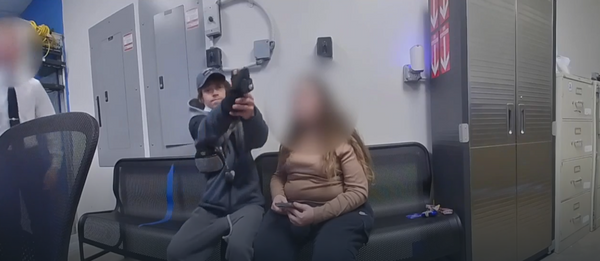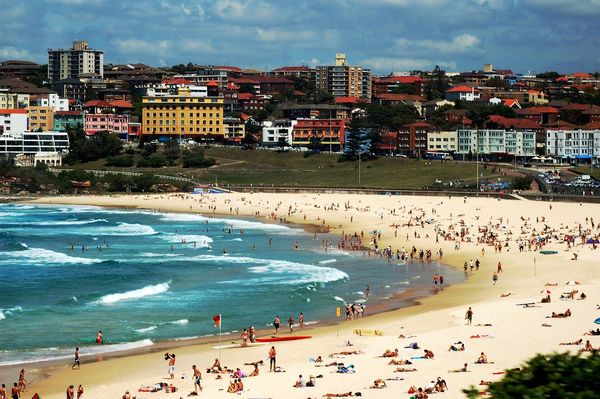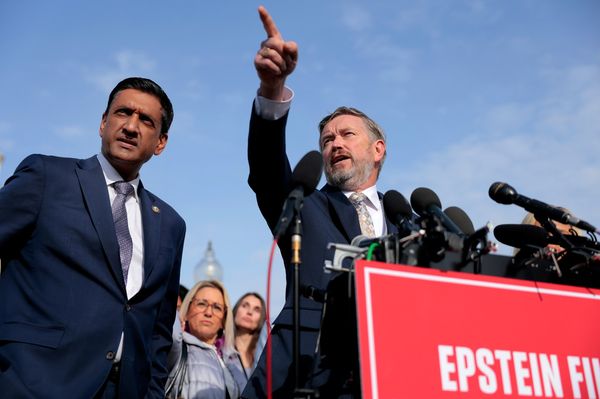
More than 200 Israeli jets were involved in initial air raids on Friday on at least 100 targets in Iran in five waves of strikes, including at the key Natanz nuclear site as well as at ballistic missile sites. Israel also killed at least nine senior Iranian nuclear scientists and a number of officials, including Iran’s most senior military officer and the head of the Revolutionary Guards.
Scores of sites appear to have been attacked in the widening campaign, including in Tehran, Shiraz and Tabriz, and reportedly in Isfahan and Kermanshah.
What nuclear sites were attacked?
Strikes at the Natanz nuclear site, Iran’s most significant nuclear enrichment facility, about 135 miles (220km) south-east of Tehran, began at just after 4am local time (0130 BST) on Friday.
Video footage posted online appeared to show the aftermath of explosions.
Protected by heavy concrete walls, Natanz’s centrifuge facilities are underground and the site has been targeted with sabotage operations at multiple locations. Construction work had been under way to expand the site.
Natanz is where Iran has produced much of its nuclear fuel – including a stockpile of highly enriched uranium that the west has suggested could be used in a future nuclear weapon.
Satellite imagery showed significant damage to two areas of the site: the electrical substation that powers it, and the above-ground pilot fuel enrichment plant, which hosts hundreds of centrifuges.
The fuel enrichment plant, which is equipped with about 15,000 centrifuges, appeared to be undamaged. The IAEA said there had been no reported nuclear contamination.
As the Israeli offensive entered its second day, reports suggested that Israel had hit the area of the nuclear fuel enrichment facility at Fordow, which is deep underneath a mountain, causing limited damage. Israel is not believed to have the type of earth-penetrating bombs required to blow up the mountain and crack open the nuclear facility inside. A nuclear research centre in Isfahan was also hit.
What else was hit?
Reports suggested Bid Kaneh, which houses several missile development and production sites, was hit on Friday morning as well as the air defence systems in western Iran.
Iran has confirmed a number of senior military figures and scientists were assassinated, some in strikes on private residences.
Iran has also accused Israel of hitting civilian areas during its assassination attempts, including a claim that 60 people were killed in a strike on a residential building in the Farahzad area of Tehran.
Israel’s military said on Saturday it had targeted surface-to-surface missile launchers used to strike Israel and surface-to-air missile infrastructure used to defend Tehran.
Among those killed were the chief of staff of Iran’s armed forces, Maj Gen Mohammad Bagheri, and the commander of the Islamic Revolutionary Guard Corps (IRGC), Gen Hossein Salami, suggesting a broader “decapitation” strike aimed at weakening the Iranian regime.
On Saturday morning, strikes were reported at Parchin military base and a jet fighter hangar at Mehrabad airport.
On Sunday, Israel’s military said it had hit “more than 80” targets in Tehran, including Iran’s defence ministry headquarters, “nuclear weapons project” infrastructure sites, and other targets, including fuel tankers. The Iranian oil ministry said Israel had targeted two fuel depots in the Tehran area, including a depot at Shahran, in the capital’s north-west, where large fireballs erupted.
Later on Sunday, Israel’s military said its air force had hit Mashhad airport in north-east Iran, in the longest-range strike of the conflict.
Israel’s strikes have killed at least 406 people in Iran and wounded another 654, according to Human Rights Activists News Agency, a Washington-based rights group that has long tracked Iran. The government in Tehran has not offered overall casualty figures.
Who were Salami and Bagheri?
Both officers were closely associated with the centres of power in Iran’s security hierarchy, having risen through the ranks after the Iranian revolution in 1979.
Salami began his career in the IRGC in 1980 during the Iran-Iraq war, becoming deputy commander in 2009, then, a decade later, commander of the 125,000-strong force that has played a key role in Iran’s forward foreign policy in the region. Salami had been subject to sanctions by the UN and US for his involvement in Iran’s nuclear and military programmes.
Bagheri, who was in his early 60s, had also risen through the IRGC, fighting in the Iran-Iraq war like Salami, with a background in military intelligence before being appointed chief of staff of the Armed Forces of the Islamic Republic of Iran – the country’s highest military position – in 2016. His position made him, formally at least, the second most powerful figure in Iran after the supreme leader, Ayatollah Ali Khamenei.
Gholamali Rashid, the deputy commander in chief of the armed forces, was also reported to have been killed. It was reported that Ali Shamkhani, a key adviser to and confidant of Khamenei, was killed in a strike on an apartment block in Tehran, as well as the head of the IRGC’s air force and a number of his senior aides.
Who were the scientists killed?
Israel has a history of targeting Iranian nuclear scientists, and this attack was no exception, with at least six scientists killed on Friday and three more on Saturday.
The Tasnim news agency named the six scientists killed on Friday, including Mohammad Mehdi Tehranchi, a theoretical physicist who was the president of the Islamic Azad University of Iran.
Also killed was Fereydoun Abbasi, a former head of the Atomic Energy Organization of Iran. Tasnim additionally named Abdolhamid Minouchehr, Ahmadreza Zolfaghari, Amirhossein Feqhi, Motalleblizadeh, as other scientists killed. Iranian state television named the three killed on Saturday as Ali Bakaei Karimi, Mansour Asgari, and Saeed Borji.
How has Iran responded?
Iran has launched a barrage of missiles at Israel, setting off air-raid sirens in Jerusalem and elsewhere. Israeli authorities said on Sunday that 14 people had been killed there since Friday and 390 injured.
These maps show the locations of strikes in both countries since Saturday night.
In northern Israel, rescuers and medics said a strike late on Saturday destroyed a three-storey building in the town of Tamra, killing four women.
Israeli police said six people were killed and at least 180 injured at the site of a missile strike in Bat Yam, near Tel Aviv on Israel’s Mediterranean coast, in the early hours of Sunday morning.
A strike on the central city of Rehovot injured 42 people.







